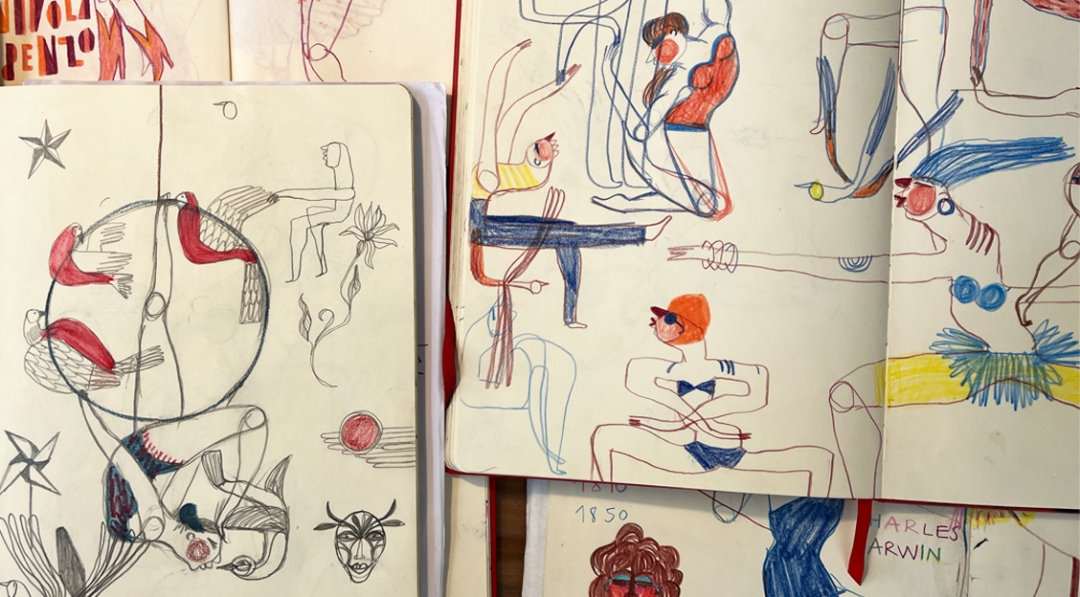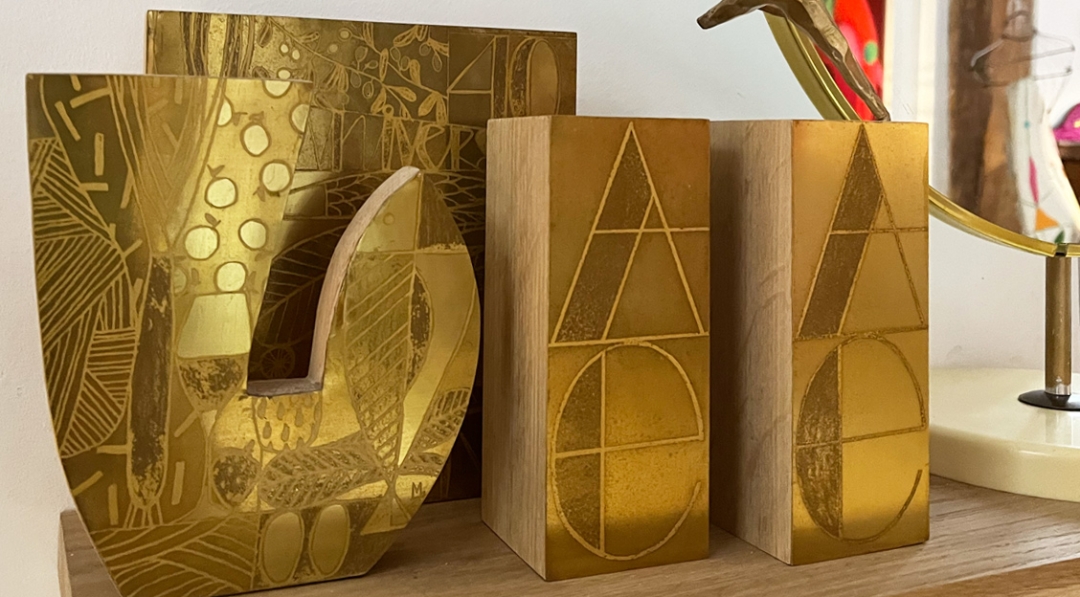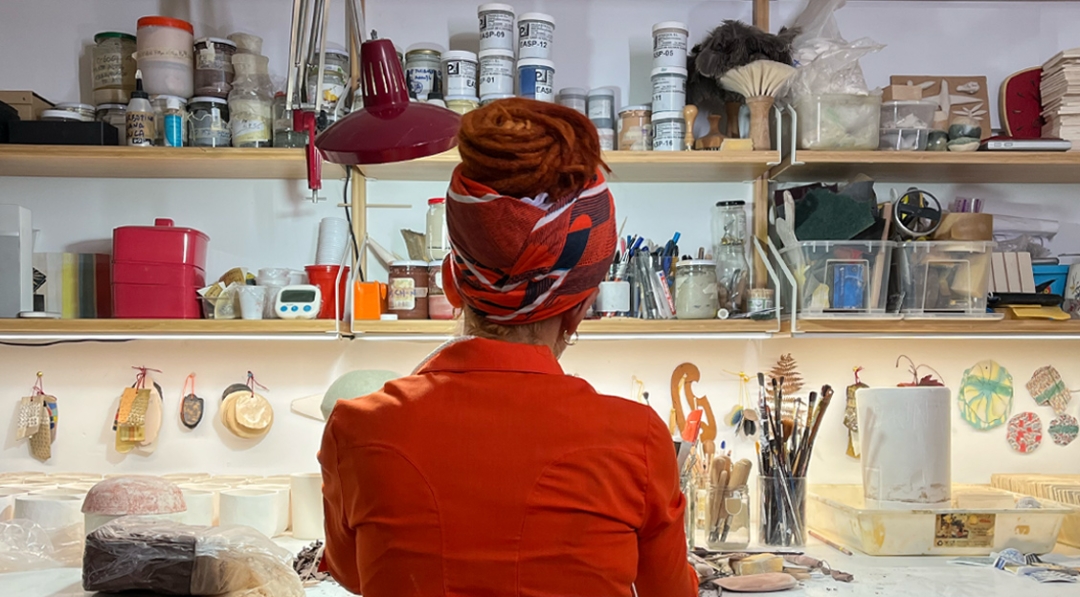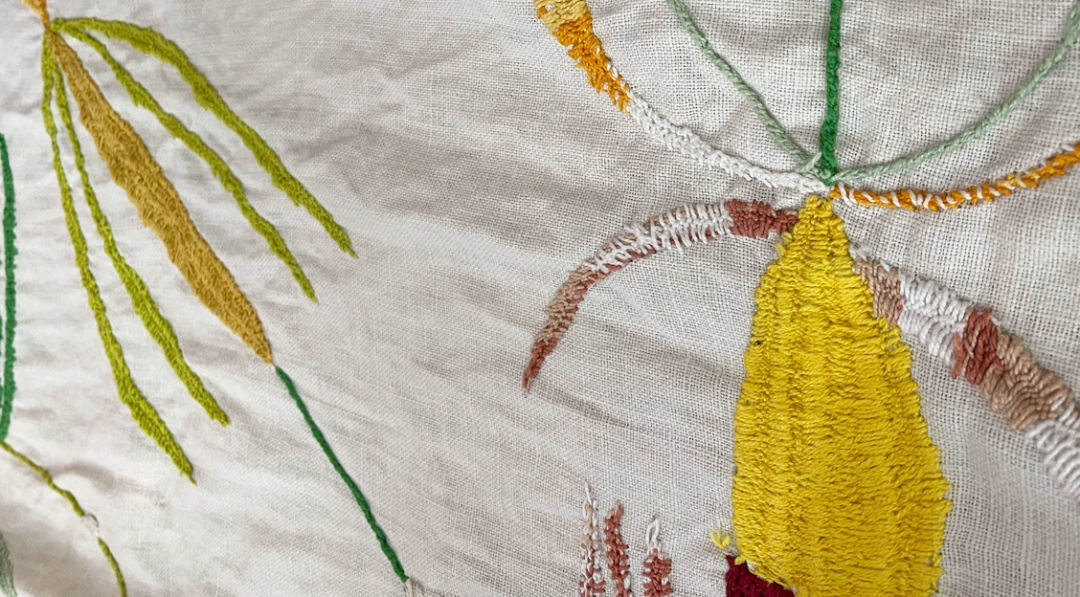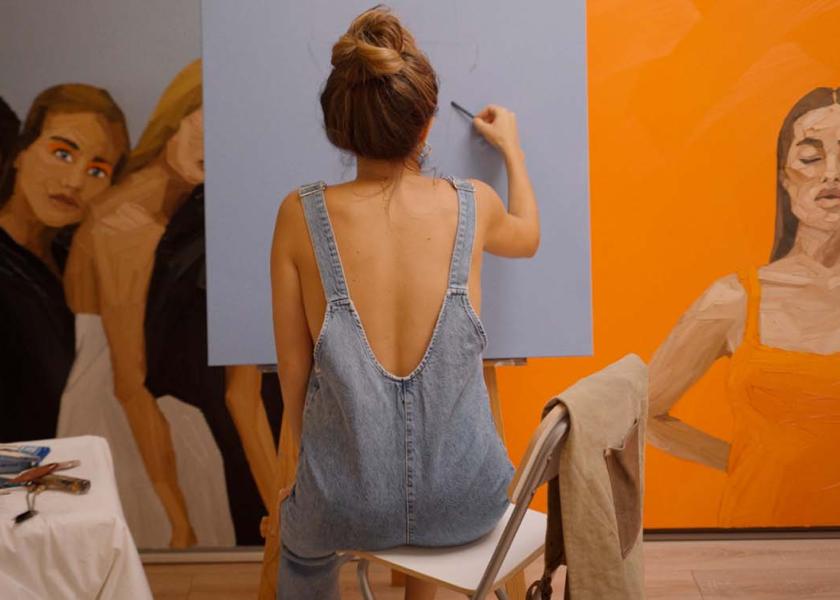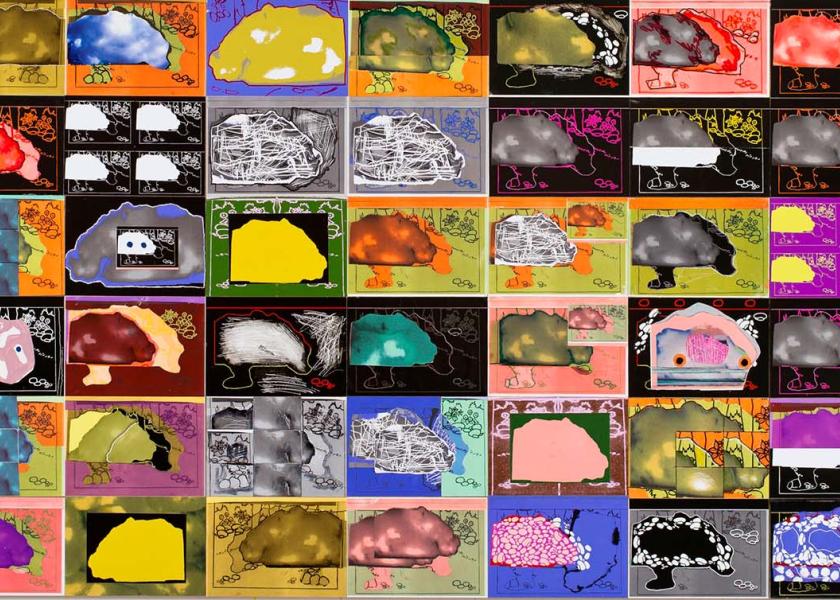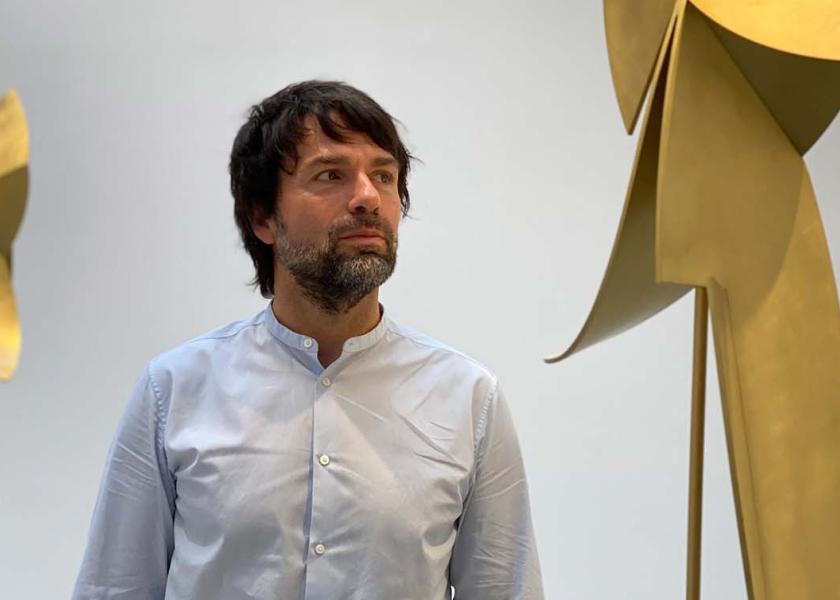Marina Anaya
Art without Instructions
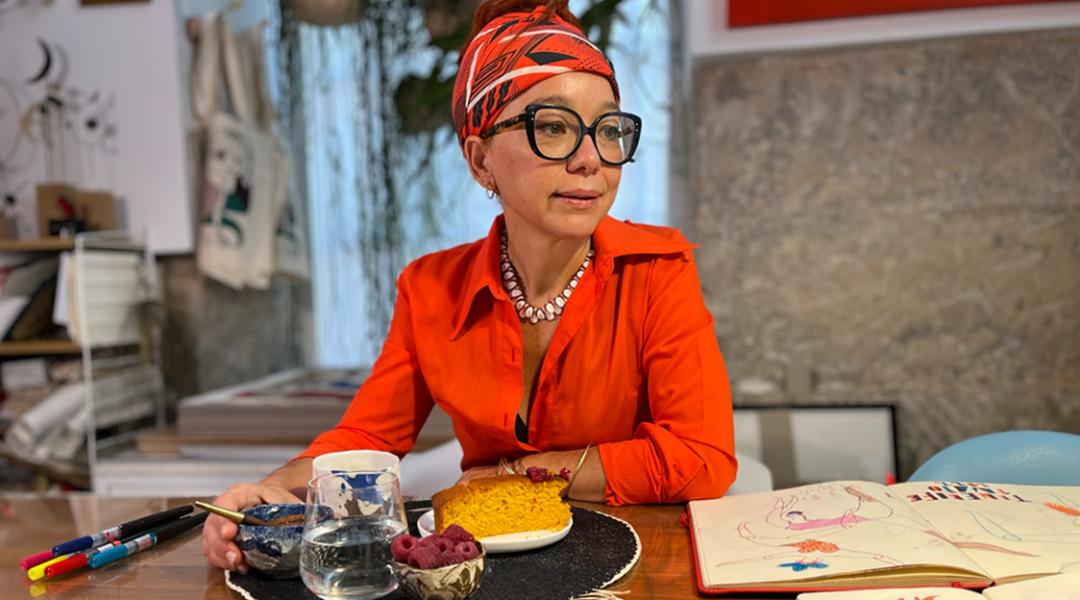
Marina Anaya’s is a universe full of colour and feeling, a world in which figures and tones transmit strength and optimism in abundance. The works of this artist touch on various disciplines —engraving, painting, sculpture, ceramics— with a common spirit: the search for beauty, for positivity, for the most “beautiful and friendly” part, in her own words, of life. An art that, she explains, requires of the spectator nothing more than to observe and have fun. Without instructions.
To enter the studio of Marina Anaya (Palencia, 1972) is to suddenly find oneself in an explosion of colour, an apparent jumble of shapes and pieces arranged all over the place; silhouettes that are sometimes intricate —others surprising for their simplicity and capacity to transmit— that nevertheless create a welcoming and intimate space, just like the artist from Palencia. The different rooms of this place of creation constitute a notable contrast with the main space: they are the workplace of a woman for whom “it is not just a question of designing the pieces, but of knowing how to make them, of knowing how the materials work.” Different moulds and tools of all kinds coexist with a large press on which the artist makes the engravings, and brushes, canvases, gouges, plates, paints, ink pots, coloured pencils, samples, or paper of all kinds are arranged on the walls and shelves, ready for use.
Her childhood, she says, has had a lot to do with this almost artisan conception of creation, in which the path, the “accompanying” of the works “from their conception, from the sketch to their final realization,” is key. “Knowing the processes brings you a little closer to the nature of things, because sometimes we see finished objects and we don't even know where they came from, or how, or why. And I grew up,” she explains, “in a family where my mother still taught us how to make fire, how to cook...” The memory brings a smile to her face: “I think this spirit remains from when I was five or six years old and started making my first little things in clay with my grandfather and my mother; the idea of art as a game remains, of having fun making art, of trying to make others have fun. And that very playful part I think is transmitted in my work in the concept, in the colours, in the movement..."
Marina Anaya studied Fine Arts in Cuenca and shortly afterwards received a scholarship that took her to Florianópolis, Brazil. The Instituto Superior de Arte de La Habana, in Cuba, was not only a doctorate for the artist, but also, she assures us, “a good apprenticeship in life”, and especially in engraving, one of the artistic disciplines that are the focus of her line of work. Today, after 25 years of professional career, Marina Anaya’s artistic universe has evolved to include other techniques and other fields. “I started with engraving, yes, then came painting, then sculpture, then jewellery as a small sculpture and, finally, ceramics. All these disciplines have been shaping my work, which is what it is now, but without abandoning any of them. Because I really like to be free when it comes to creating and to be able to transform my ideas or my sketches into any of these different branches.”
“Since I was a child — the artist reflects — I have had a lot of family support to carry on with what was a total vocation. I do believe that in all visual artists there is a part of talent, but it is very important that you have been able to discover or that someone has been able to find in you, or has helped you to discover, that talent. And, of course, there is a large part of learning, of development, of perseverance. Talent without work would not become works of art.” In this sense, freedom when creating and this multidisciplinary and artisan conception are both part of and the basis for his creations. “I see myself exactly the same, creating with the same freedom as I did when I was a child; I think my life has changed practically nothing,” —she laughs. “Now I do it in a different way, with other perspectives, with a different dissemination of my work, with a deeper knowledge. But my day-to-day life is very similar. I work from the same place: it was my passion then and it is still my passion now.”
“In all visual artists there is a part of talent. And, of course, a part of learning, of development, of constancy. Talent without work would not become works of art”
Marina Anaya’s creations are now exhibited all over the world, from Madrid to Tokyo and Buenos Aires. “Luckily, when I have been able to see my work in different exhibitions in Asia or Latin America, the public’s response is always very receptive. Maybe because the place from which I work and from which I try to transmit reflects kindness, possibility, optimism, that playful and beautiful part of life. I am in favour of an art that is playful, and an art without an instruction book in which the pieces speak for themselves,” she sums up. “I think it's important that the spectator, the one who looks at the works, the one who looks at the works, makes them his own and has his own assessment, even if it’s totally different to mine, to the one I had in my head when I made these pieces. But I believe — she smiles — that this is what really completes the work of art, the gaze of the one who values it, the one who sees it.”
The artist’s work, Marina Anaya explains, is sometimes solitary: “There are many hours in your studio working on everything that goes through your head.” A “marvellous” activity, she explains, which draws on multiple influences such as “exhibitions, travel, workshops, friends, children's drawings...,” but which takes the form of an activity that she carries out, for the most part, in solitude. “I find it interesting to collaborate and whenever I can I work with other artists on joint projects, with NGOs or with other contacts.”
Of all these partnerships, “the most significant is the one I do with my aunt Mari, a 90-year-old woman who lives alone in a small village in Salamanca,” she says. This joint work has been going on for 25 years now, with a marked dynamic: “I draw some fabrics, I send them to her in the village with the threads, she embroiders them, choosing the colours, and when I receive them back, I turn them into cushions, armchairs, bedspreads, dresses...” Pieces and more pieces —pure colour and movement— that Marina Anaya shows with family pride. “It is enriching. Although sometimes she gets angry with me because the fabric I send to her is not big enough,” she concludes with a laugh.
